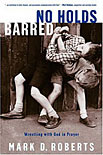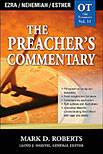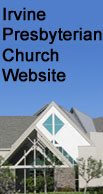« Live Blogging Lent: Fasting from Fast? | Home | Sunday Inspiration from The High Calling »
Live Blogging Lent: Fasting from Fast? (Section 2)
By Mark D. Roberts | Friday, February 26, 2010
Part 4 of series: Live Blogging Lent
Permalink for this post / Permalink for this series
Yesterday I began a Lenten review of the book Faster by James Gleick. Today I want to respond a bit more to the book, adding an apt illustration from my own life.
The basic thesis of Faster, prodigiously illustrated, is that just about everything in our lives is moving faster than ever before. Yet, according to Gleick, this fact hasn’t necessarily made our lives any better. We might think that “faster = better,” and it might seem that way at first, but before long we adjust our expectations so that “faster” becomes ordinary and life becomes more hectic, less restful, and more meaningless.
I’ve got a fitting example from my own life. If you’re over fifty, this example will probably fill you with nostalgia. If you’re under thirty, it will sound like I’m narrating ancient history. Either way, my personal case study shows how certain things are, indeed, faster, but not necessarily better, at least not entirely.
I am thinking of how interoffice communication has changed since I began work at the First Presbyterian Church of Hollywood in 1984. Twenty-six years ago, if I wanted to communicate with a colleague, I had a couple of choices besides a face-to-face meeting.
First, I could call my colleague on the phone, a landline call. If he or she was unable to pick up, there was no voice mail. We had one answering machine for the whole church, a 4,000 member church at that. Rather, if my colleague didn’t pick up, a secretary (yes, “secretary,” not “executive assistant”) would receive the call and take a message, usually on a specially made message pad that made a carbon copy for the secretary’s records. The message would be placed in my colleague’s inbox (a literal box!), to be found later in the day, or perhaps several days later. Friday afternoon phone messages might not be read until Tuesday morning, if my colleague happened to be a pastor who didn’t read messages on Sundays (a wise practice) and took Mondays off.
Once my colleague got my message, a similar procedure would be involved in responding to my call. Thus, there might be several days between the initiation of the communication on my part and the actual exchange of information. This didn’t seem slow to me. Just normal. In a real emergency I could call a colleague at home. But I rarely did this. We seemed just fine with a couple days lag time for exchanging messages.
In 1984, my second choice if I wanted to communicate with a colleague at work was to send a memo. Of course there was no electronic means to do this. Fax machines were rare and quite expensive in that day. So, here’s a fairly typical two-way memo sequence from 1984:
Monday: In the morning, I dictated a memo to a friend. In the early afternoon, my secretary typed it out on a typewriter, keeping a carbon copy for her files, and put it in an interoffice envelope. Because we missed the day’s mail pickup, which usually happened around noon, the memo sat in my secretary’s outbox for the rest of the day.
Tuesday: The church mail delivery person picked up the memo in its envelope, saving it for delivery the next day.
Wednesday: The memo was delivered to my colleague’s inbox. My colleague read the memo on Wednesday afternoon and dictated a response.
Thursday: My colleague’s secretary typed out the response, saving a carbon copy for her files. She did5 this in the morning, putting it in her outbox just in time for the daily mail pickup.
Friday: My colleague’s response was delivered to my inbox around noon. Because Friday was my official day off, I didn’t see the response.
Monday: I read my colleague’s response, almost exactly a week after the dictation of my first memo.
It did not occur to me to think this system of communication was slow. It was just normal.
In 1984, as Director of College Ministries at the First Presbyterian Church of Hollywood, I had good relationships with my colleagues. We shared life and ministry together, seeing lots of exciting things happening in our church, our community, and around the world. We were busy, but were not frustrated by any slowness in our pace of ministry planning and implementation. In fact, these were highly productive and positive years for my colleagues and me.
Now, of course, interoffice communication happens just a wee bit faster today. If I want to communicate with a colleague at Laity Lodge (or Foundations for Laity Renewal, of which Laity Lodge is a part), I have four main options, in addition to wandering over to that person’s office (which I often do, in fact, now more than ever before).
First, I can place a phone call with a landline to my colleague’s office landline. About half of the time I’ll get that person, much as was the case in 1984. If my colleague doesn’t pick up the phone, I’ll leave a voicemail message. I usually get a return call within a few hours at most.
Second, I can call someone on a cell phone. Often this gets the person right away, even if he or she is out of town. If I leave a voicemail, I generally get a return call in minutes, if not a couple of hours. (Exception: We have no cell service at Laity Lodge!!! I can’t get calls or messages. Nor can I make cell calls. Laity Lodge is an oasis of peacefulness in a cellular world.)
Third, I can send an email. This is, of course, the 2010 version of the interoffice memo. And this is often my preferred means of communication because of the convenience and the electronic record. No carbon copy required! If I send an email, it goes to the computer “inbox” of my colleague just as soon as I finish typing up the note. Often, my colleague will read the message within minutes (or seconds) and respond within minutes (or seconds). The average response time is less than a day in most cases. Quite a bit faster than the week or so that it took me to engage in a similar process in 1984.
Fourth, I can send a text message. Because I’m over fifty, this is not my preferred means of communication. My thumbs just aren’t fast enough. But, at times, I do send a text message, say, for example, when I need to tell somebody something somewhat urgent and I know he or she is in a meeting.
To be sure, there are other ways of communicating with my colleagues, such as Facebook or Twitter. But so far I have not found these to be especially helpful. Again, that’s probably because I’m well into middle age.
No question about it, the pace of interoffice communication is much faster than in 1984. There are plusses. Certain kinds of planning and decision-making can be done more easily and with less frustration. Certain kinds of questions can be answered in a timely fashion, like: Do you want to go to lunch tomorrow?
But are we really better off because we can communicate more quickly? Perhaps in some ways, but not in others. Faster may be better, but may also be worse. I’ll explain what I mean in my next post in this series.
Topics: Lent |
3 Responses to “Live Blogging Lent: Fasting from Fast? (Section 2)”
Comments
Thanks for your willingness to make a comment. Note: I do not moderate comments before they are posted, though they are automatically screened for profanities, spam, etc., and sometimes the screening program holds comments for moderation even though they're not offensive. I encourage open dialogue and serious disagreement, and am always willing to learn from my mistakes. I will not delete comments unless they are extraordinarily rude or irrelevant to the topic at hand. You do need to login in order to make a comment, because this cuts down on spam. You are free to use a nickname if you wish. Finally, I will eventually read all comments, but I don't have the time to respond to them on a consistent basis because I've got a few other demands on my time, like my "day job," my family, sleep, etc.
You must be logged in to post a comment.















February 26th, 2010 at 10:33 am
thanks for the review of my work-life also. At the large company were i worked for 30 years we called those inter-office envelopes “Ponies” and the process “Pony-mail”. now I work part-time at a community college and I have a hard time saying “inter-office mail”.
My favorite now is emailing back and forth with short questions and answers. I have determined to actually dial the phone when that is happening.
February 27th, 2010 at 2:39 pm
I’m old fashioned, but I sure don’t have any nostalgia for “memos”–To, From, Re:–all set up on a typewriter or a clunky word processing program! Email might imitate that, but without all the anxiety and fuss.
February 28th, 2010 at 4:07 pm
Rev Mark Roberts & family, Thanks for the real life memories which would seem dinosaur like to the younger generations texting away. Glad at middle age–I want to be deliberately slow with all the modern technology want to be all left thumbs as it changes swiftly & a lot more expensive than paper & pencil or paper & pen. But, do understand people politics & nepotism hasn’t changed a bit in America & Europe just a west coaster observation. Hope Tejano has not had too much snow this past winter & spring j Happy spring & soon summer fellow readers!!